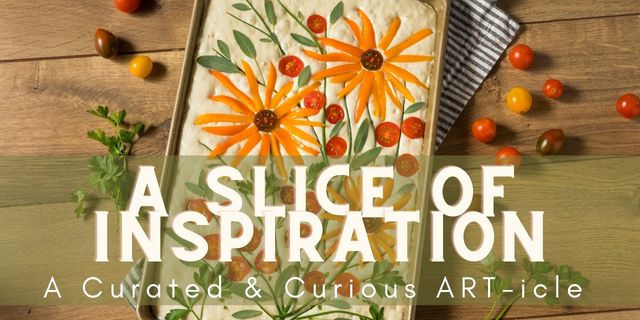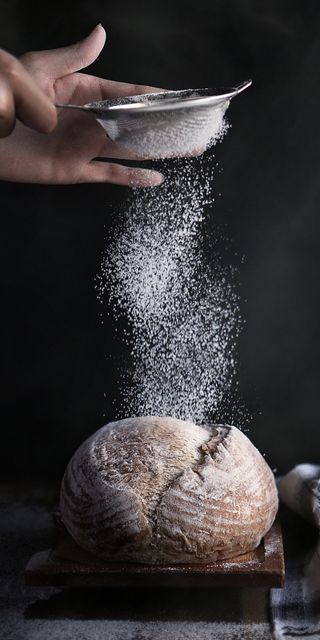

Remember back at the beginning of the pandemic how everyone got into a new hobby? How in some stores you couldn’t even buy flour or eggs or yeast because it seemed like everyone suddenly got into making homemade sourdough? It got us thinking more about bread and the cultural connection to our world today. Some resources say that bread was first created some time around 8000 BC in Ancient Egypt. Back then it looked flat and round, closer to tortillas or chapatis then what we in North America may think today with our bakery made, fluffy and airy loaves.
Bread, or a form of bread, has been a food staple all around the world that can have a wide variety of ingredients. It is a very common object to appear in archaeological sites, in journals, or in historical records or cookbooks. Most interesting of all, have you ever thought about how bread is super common to appear in works of art?
The cross over between the two is more common from the obvious, such as still lives from the Dutch Golden Age or Ancient depictions of everyday life. Even today the tradition carries on and in an even wider form – anything from sculptural explorations in marble or metal to using actual bread and making edible art.
In some ways it makes sense that this every day item has a place as an honoured subject – bread was and is easily accessible, very common and holds meaning and superstition. One of the paintings that comes to mind is Vermeer’s painting “The Milkmaid”. He painted many household scenes but there is a serenity and concentration felt in “The Milkmaid” along with hominess. In the foreground of the painting is bread that is broken up and it is thought that she is making bread pudding – which of course brings us to the idea of transformation – stale un-usable bread into something enjoyable and filling.
Artist Tim Silver created an entire series, Oneirophrenia (2015), based on the bread and the idea of time, death and decay. He baked bread in concrete busts of himself and while the bread baked it found the weak spots in his sculptures and cracked it to release the pressure. He then took photos of the process from the fresh creation to where it ended up as the bread disintegrated. This resulted in art pieces that are both uncomfortable to look at and yet strangely beautiful as they continue their process of life towards death.
Honoured Canadian Cree Painter, Allen Sapp, created work that reflected the love and care he experienced in his life. “Allen was raised and cared for by Maggie Soonias, his grandmother. The memory of this tender relationship has spawned in the Sapp Gallery some of his finest and most sensitive works, bringing to his canvas a sense of affection and love rarely communicated or seen in the twentieth century art world.” (Allen Sapp Gallery) and this feels to be so present in his painting “Making Bannock”. A woman peers at the viewer while in the process of making Bannock and it feels like he is lending you a memory. The texture and colours bring you into the moment so you can almost hear the fire and smell the ingredients.
So why this focus on bread? Could it be the idea of transformation? There is a form of alchemy that happens when you take your ingredients, coax them together in a mouldable dough and bake them firm. Some say that the best bread is created when special hands knead it together with just the right touch – similar to how a great painter can add just the right flourish.
Or, is it the idea that bread represents something for us as humans? The idea of nourishment comes to mind and its ability to sustain life. In the Christian tradition bread is a symbol of the body of Christ and in many religious contexts it is associated with many aspects of the cycle of life such as pregnancy and death.
Superstition even has a lengthy place at the bread table. Throwing out stale bread, or even just placing it upside down on a table brings bad luck and if you cut your loaf into an even number of slices it will bring you good luck – whereas uneven numbers could reveal to others that you have recently lied about something.
Whatever it is that causes artists across the world and in any time period to be inspired by bread, it is amazing to see the work that comes from it.

We’re curious – Have you have every created art using bread as inspiration? Or maybe you have a favorite piece of work that has bread appearing in it. If so, share it with us! Click the Contact Us button to tell us more about it.
KnoxVan supports and encourages others to SUPPORT ARTISTS as they find new ways to share their talents and skills
– click on the link DONATE
Find Knox
5590 Balaclava Street
Vancouver, BC
V6N 1L1 Canada
